Shaping Tomorrow: A Dance of AI and Human Minds
A global innovator is bridging today’s industrial AI capabilities with tomorrow’s groundbreaking research systems, paving the way for a new era of human-machine collaboration.
At a state-of-the-art laboratory in Japan, an AI-driven system being developed by OMRON in partnership with Chugai Pharmaceutical Co. Ltd. works tirelessly alongside researchers, automating routine tasks like chemical agent preparation and experimental analysis.
The Next-Generation Flexible Laboratory Automation System represents a significant leap in AI capabilities. By handling various types of experimental tools and automating experiments with complex operations, the system, which is in continuous development, frees human researchers to focus on high-impact, creative work.
It is a striking example of how OMRON’s expertise in industrial automation is reshaping science and industry today. Guided by the vision of its founder, Kazuma Tateisi—who believes that people should leave what machines can do to machines, and enjoy activities in more creative areas—OMRON has spent decades advancing technology to empower human potential.
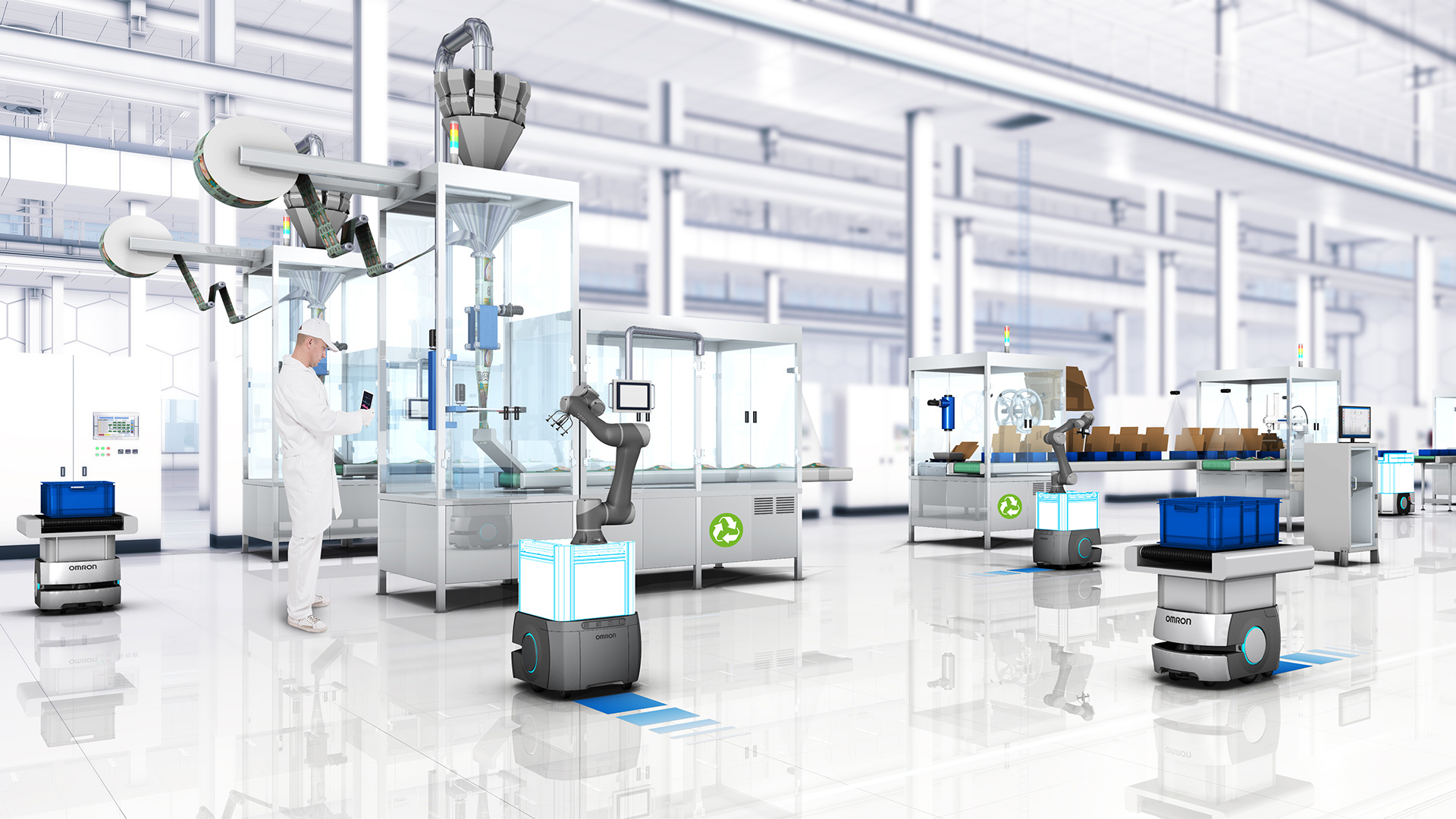
From intelligent robots navigating factory floors to AI-powered controllers optimizing industrial processes in real time, OMRON’s AI innovations are solving pressing industrial challenges, from quality control to supply chain optimization. Its i-BELT technology, for instance, transforms manufacturing data into meaningful intelligence to solve production challenges.
“These technologies embody OMRON’s mission to address real-world issues through automation, including labor shortages and waste reduction,” says Tim Foreman, R&D Manager at OMRON Europe. “The potential benefits are clear: globally competitive products; optimized processes; and empowering operators to focus on creative tasks—while having fun.”
Building on this foundation, OMRON’s advanced research arm, OMRON SINIC X (OSX), is taking AI to the next frontier, creating systems that can autonomously innovate and conduct experiments, transforming the future of research and development.
Moonshot Vision for AI-Powered Research
OSX is at the forefront of a bold initiative to develop AI-driven systems, incorporating robotics, advanced computing and precision measuring devices capable of working alongside humans as partners in discovery. The project has been selected to be part of Japan’s Moonshot Research and Development Program, a national initiative addressing humanity’s greatest challenges.
Under Moonshot Goal 3, the project team envisions AI robots that can autonomously learn, adapt and collaborate with humans by 2050. OSX is a leading player in this effort, developing AI-powered systems designed to not just support researchers, but fully integrate into the creative process.
“We are creating systems that understand, generate new ideas and execute experiments,” says Yoshitaka Ushiku, Vice President for Research at OSX. “These systems will actively engage with researchers, offering insights powerful enough to influence decisions and shape the direction of research.”
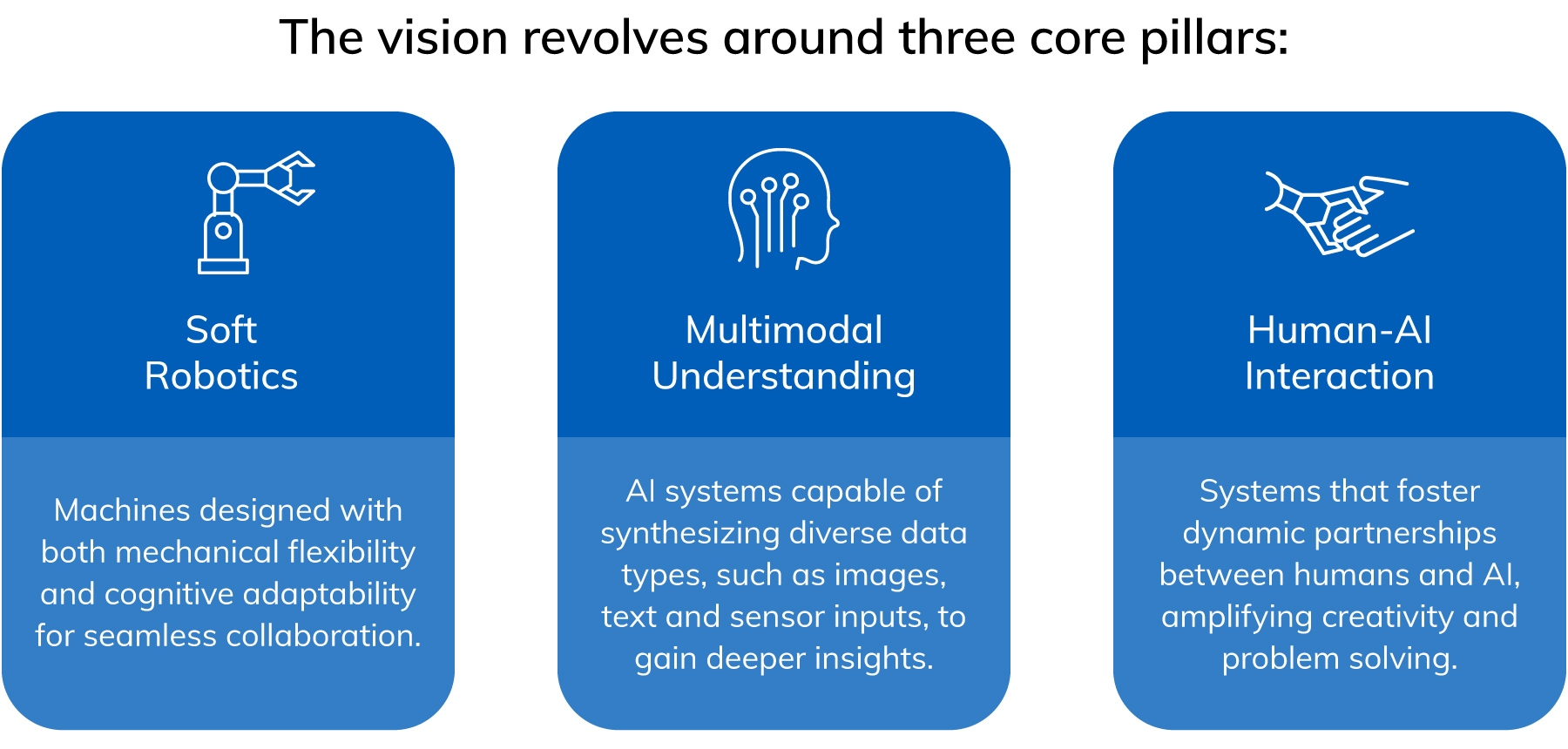
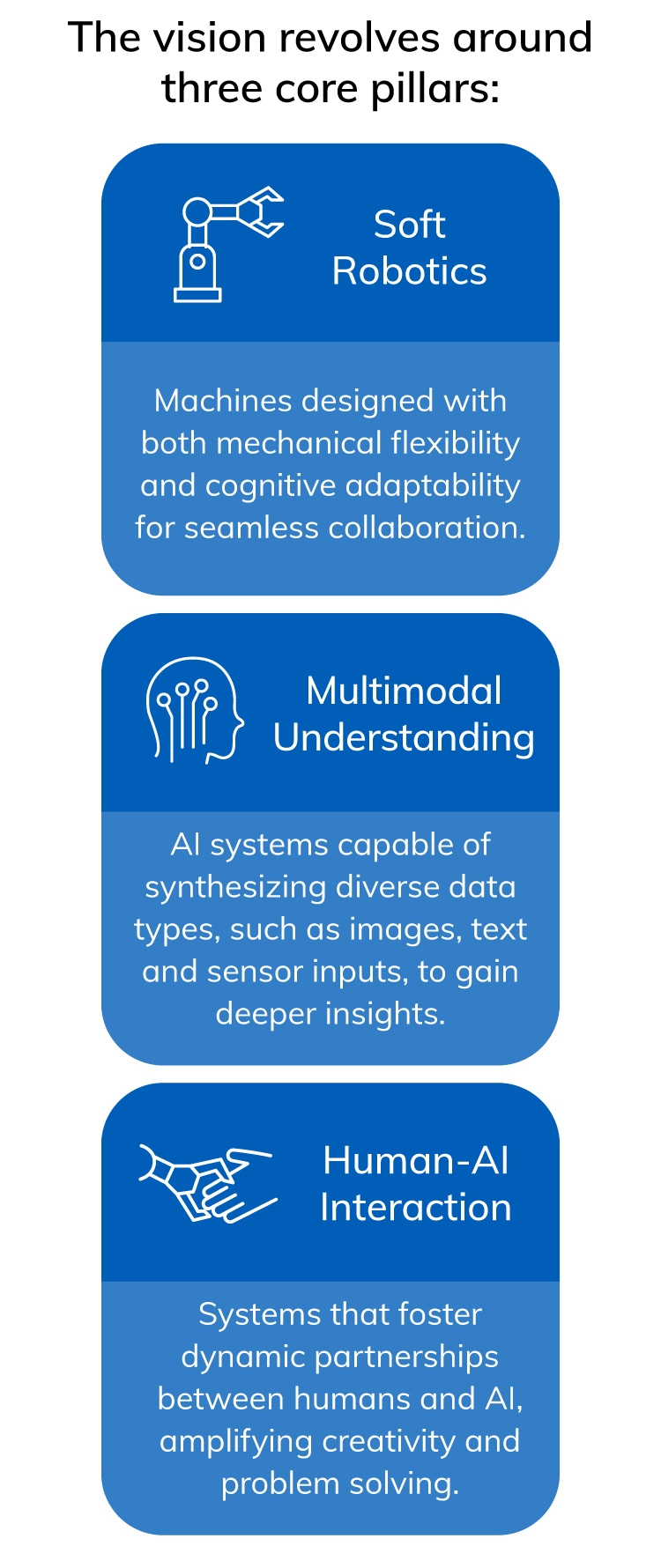
“In SF2030, OMRON believes that AI and robotics will play a foundational role in solving societal issues,” says Ushiku. “Our goal is to create methodologies that not only redefine research, but also address global challenges like climate change and healthy lifespans.”
Transforming the Lab and Beyond
OSX’s ambitions are coming to life in its ongoing partnership with Chugai Pharmaceutical, as they expand the capabilities of the Next-Generation Flexible Laboratory Automation System. While OMRON’s expertise in robotic sensing and control ensures that the system excels in automating routine tasks, OSX is pushing the collaboration into uncharted territory.
By integrating advanced AI systems, OSX aims to address challenges that lie five to 10 years ahead—such as automating the handling of complex materials, from solids to viscous substances. Over time, the partnership envisions robots that can independently plan and optimize entire experimental workflows, accelerating drug discovery and other breakthroughs.
“In addition to ideation, AI-enabled robots can conduct experiments for researchers 24/7, 365 days a year, in hazardous environments such as areas with high radiation or extreme temperatures,” Ushiku says. “With a group of such AI scientist robots, research labs could dramatically boost their throughput.”
The Path to AI-Driven Research Robots
One of OSX’s ultimate goals is to create a world where AI-powered research robots help deliver Nobel Prize-worthy discoveries by 2050. These robots are being designed to tackle every stage of research, from ideation and experimentation to analysis and description, allowing human researchers to focus on strategic, high-value tasks.
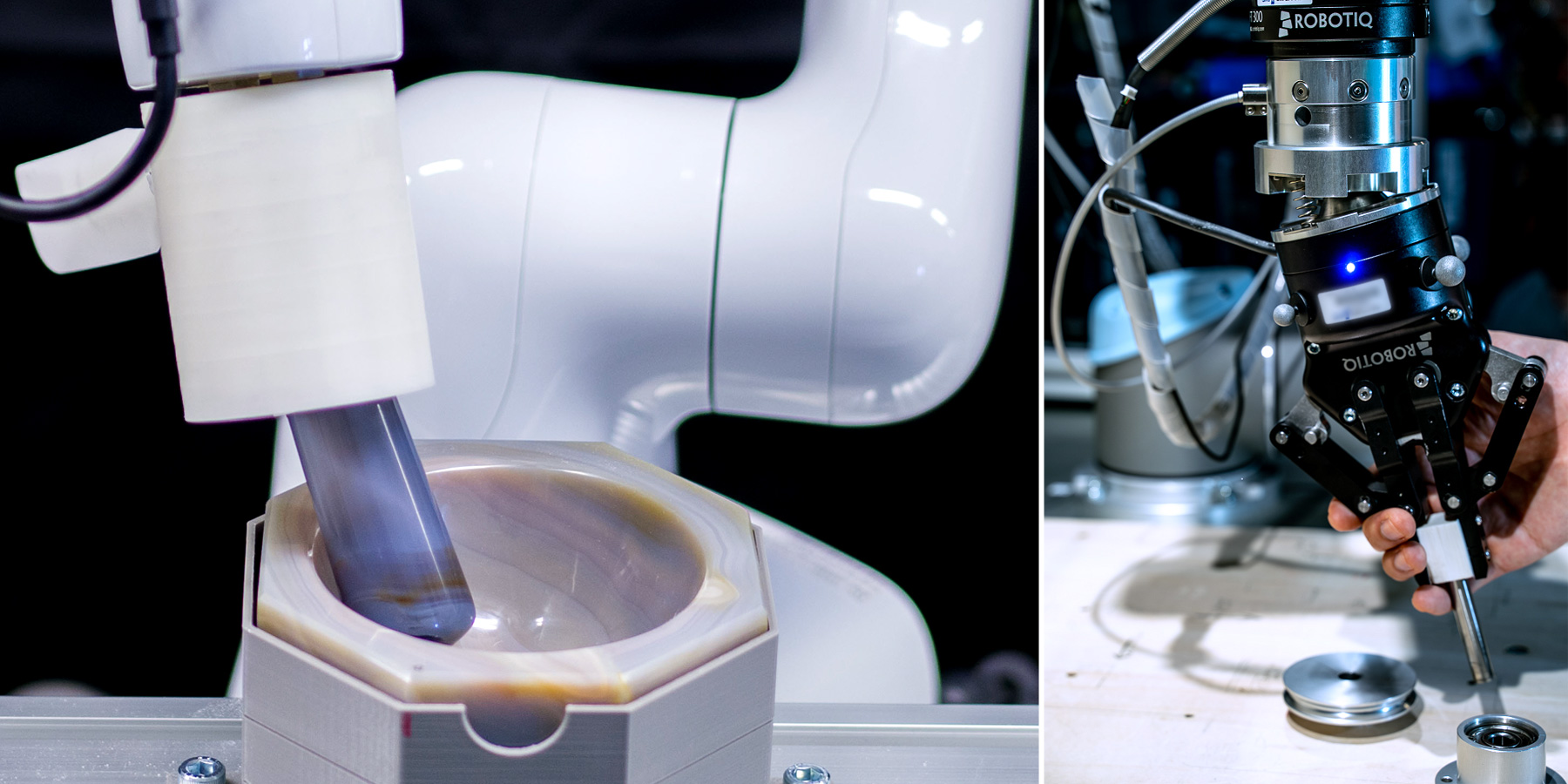
The project’s first milestone, targeted for 2025, is to develop AI robots capable of deciphering research claims, reviewing papers and replicating studies. By 2030, the team aims to see these robots publishing in peer-reviewed journals and contributing meaningfully to high-impact research by 2040. These systems promise to revolutionize fields such as materials science and biology, where AI’s ability to test hundreds of hypotheses in parallel could accelerate breakthroughs that would otherwise take years.
“AI robots should make evidence-backed proposals of such high caliber that researchers can adopt them for further innovation,” says Ushiku. “But they will not conclude the entire research process on their own. They are designed to enhance human creativity, not replace it completely.”
A Human-Centric Approach to AI
OMRON’s vision for AI extends beyond automation to fostering a multidisciplinary ecosystem where humans and AI seamlessly collaborate. The vision also addresses critical challenges such as ensuring AI transparency and preventing misuse.
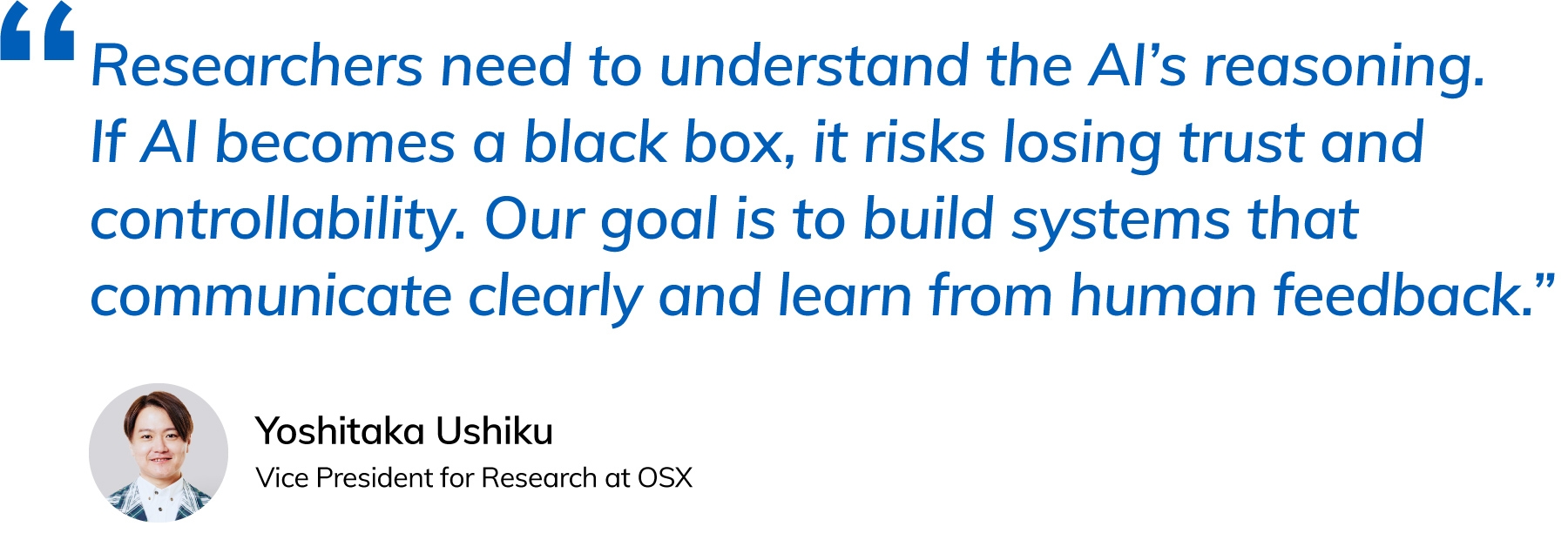
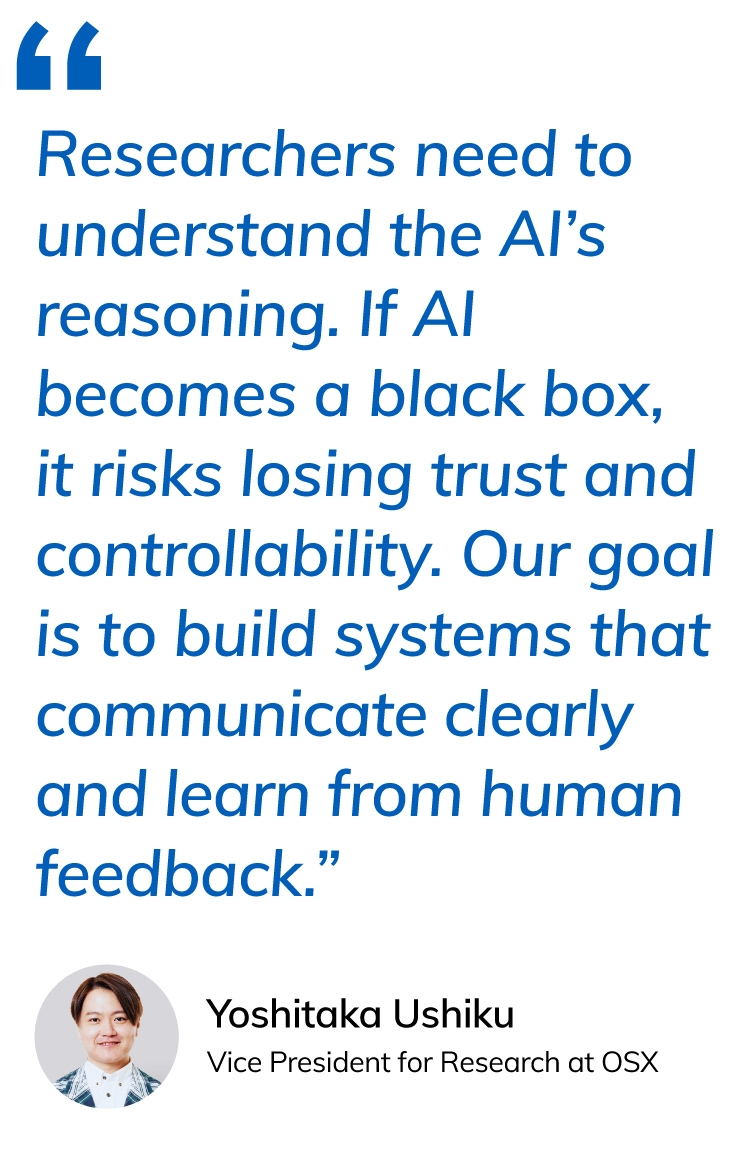
OSX is exploring how AI can mediate communication between researchers in different fields, and overcome barriers in scientific language and methodology to promote understanding of different research perspectives. Success could enable true cross-disciplinary innovation, where insights from biology, physics, chemistry and other domains combine to inspire novel solutions.
“The core skills for human researchers will shift toward the ability to give commands and make judgments,” says Ushiku. “Knowing how to direct AI effectively will become a critical skill in this new era. Our mission is to empower humanity through technology. The future is about more than automation—it’s about collaboration with AI to build a better world.”
